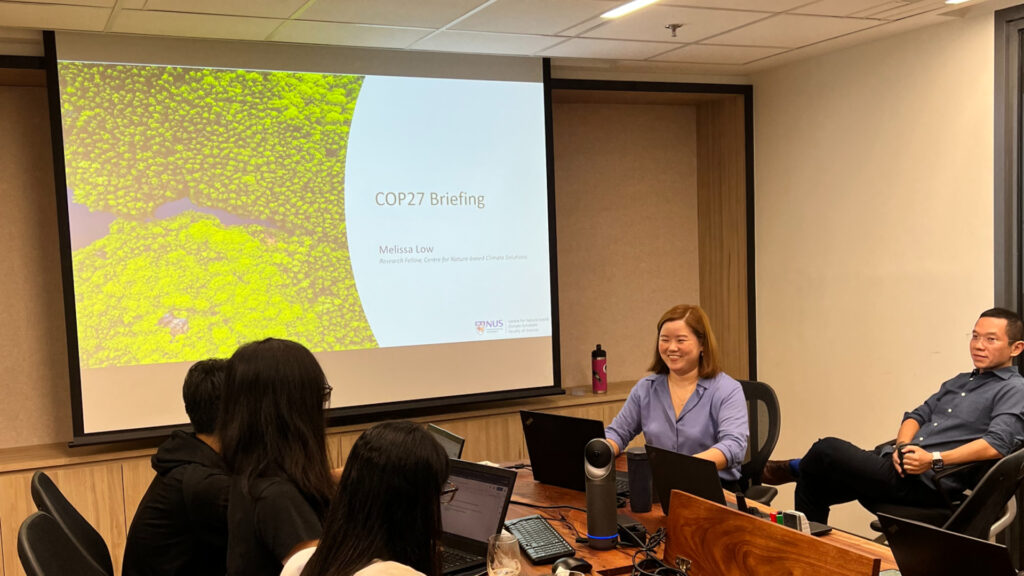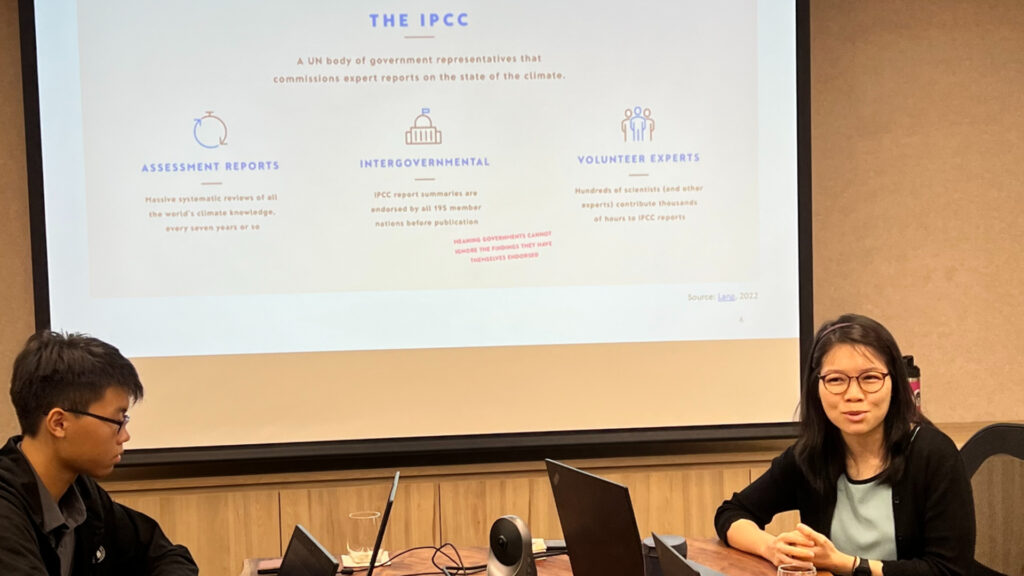NUS at COP27: Why the Annual UN Climate Summit Matters
November 4, 2022
IN BRIEF | 10 min read
- This year, researchers from different NUS schools and institutes – including the Lee Kuan Yew School of Public Policy, Middle East Institute, and the Centre for Nature-based Climate Solutions – will head to COP27 to track the negotiations, and contribute to the dialogue on climate action by hosting panel discussions centred on climate change and biodiversity loss, the demand for carbon credits, and other pertinent topics.

Three days after Singapore announced ambitious plans to hit net-zero greenhouse gas emissions by 2050, a panel of experts discussed key climate change issues ahead of the United Nations 27th Conference of the Parties (COP27).
Singapore’s updated climate targets, including its plan to reach net-zero emissions, will be formally submitted during the COP27 climate summit at the Egyptian seaside town of Sharm el-Sheikh from 6 to 18 November 2022.
Deputy Prime Minister Lawrence Wong, in announcing Singapore’s latest net-zero pledge, said it was a “stretch goal” due to limited options to deploy renewable energy at scale.
The ability to meet the promise would “depend on the continued international commitment by everyone to the Paris Agreement and their climate pledges”, he added, referring to the landmark international treaty inked at the 2015 summit.
During the event on 28 October organised by the Centre for Nature-based Climate Solutions (CNCS), a research centre of NUS’ Faculty of Science, the experts highlighted four key issues that will be discussed at COP27 to set the world on a net-zero path.
NUS has been accredited by the United Nations Framework Convention on Climate Change (UNFCCC) as an observer organisation since 2014, and members of the NUS community have attended the annual COP summit since COP20 as official observers. This year, researchers from different NUS schools and institutes – including the Lee Kuan Yew School of Public Policy, Middle East Institute, and CNCS – will head to COP27 to track the negotiations, and contribute to the dialogue on climate action by hosting panel discussions centred on climate change and biodiversity loss, the demand for carbon credits, and other pertinent topics.
Carbon Markets
How fast countries can cut their emissions is critical, said Research Fellow at CNCS and alumna Mellisa Low (NUS Geography, '10; Environmental Management, '13). It is even more urgent with increasing frequency of weather disasters wrought by global warming, such as heat waves, droughts and floods.
A game changer was the approval of Article 6 of the Paris Agreement during COP26. This framework to govern carbon markets took six years to settle, double the time taken compared to other rules, but would go a long way to reduce the cost of implementing each country’s pledged Nationally Determined Contributions (NDCs) to reduce emissions.
Over time, NDCs have been improving, noted Ms Low, who cited growing confidence of various countries towards the Paris Agreement.

“They know that the Paris Agreement is a road to implementation, and they’re willing to put forward strengthened targets,” she explained, adding that these targets also offer tangible benefits such as capacity-building or technological support from other countries.
But there are some issues to note under Article 6, she said, including fine-tuning criteria to ensure carbon projects truly benefit the climate.
Considering its limited land area that makes the deployment of large renewable energy farms difficult, Singapore will likely have to buy carbon credits to meet its climate targets, said Ms Low.
At the same time, given the country’s aspirations to be a carbon services hub, Singapore will also be a seller of carbon credits.
This makes it crucial for Singapore to be actively involved in carbon market discussions at COP27, said Ms Low.
NUS is also contributing to carbon market developments on the research front. To support the prospecting, development and management of nature-based carbon credit projects worldwide, CNCS and ST Engineering Geo-Insights recently launched a new interactive mapping tool, called the Carbon Prospecting Dashboard. This first-of-its-kind dashboard supports the preservation of carbon-rich, natural ecosystems, such as tropical forests and mangroves, by helping policymakers and investors identify where nature-based projects can be developed as potential sources of high-quality carbon credits.
Loss and Damage
Loss and damage refer to the irreversible consequences of climate change that cannot be reduced by current adaptation efforts, such as the loss of lives and damage to infrastructure that occur due to natural disasters such as cyclones. Developing countries typically bear the brunt of these consequences, even though they may not be fully responsible for the climate changes that make natural disasters more frequent and harder to predict.
Without an international definition for loss and damage, compensation becomes a tricky topic to broach, said Mr Sandeep Chamling Rai, Senior Advisor of Global Climate Adaptation Policy, Climate, and Energy Practice at World Wildlife Fund (WWF) International.
“The general understanding is that there is insufficient mitigation and lack of support,” he shared on this contentious issue.
COP27 could see developing countries pushing to set up a fund dedicated to loss and damage. Mr Rai also hopes COP27 will establish a clear path towards the Global Goal on Adaptation, a target to reduce liability to climate change, and identify ways to support vulnerable groups in the adaptation process.

Climate Finance
One of the sticking points is the lack of climate financing, with COP26 failing to deliver on the promise of US$100 billion to assist developing countries in need. The summit in 2021 only managed to mandate the processes to define new finance goals by 2024.
As countries move towards greater climate negotiations, many are already making their financial limits clear – dampening hopes of reaching the US$100 billion financing goal.
Mr Rai, however, remains optimistic that countries will likely reach a consensus ultimately, in the name of the greater good.
Cutting emissions
Based on today’s greenhouse gas emission trends, Singapore is unlikely to meet its government pledges. But it is also not impossible, said Dr Lynette Cheah, Associate Professor of Engineering Systems at the Singapore University of Technology and Design.
“Rapid and deep emission reductions are needed across all sectors to limit warming, but it is not infeasible,” she said, explaining that this will require phasing out or reducing coal and fossil fuel usage to be replaced with renewable energy instead.

Constructing buildings with the right materials can also contribute to lowering carbon emissions. According to the CICERO Center for International Climate Research, cement production generated nearly 2.9 billion tonnes of carbon emissions in 2021. Using greener materials will lead to greater carbon reduction.
Sustainable living is further attainable through changing habits as well as greater tech adoption. This includes consuming less or choosing greener products and lifestyles.
“Even though it’s difficult, we have options in all sectors to reduce emissions,” said Dr Cheah.
This story first appeared in NUSNews on 3 November 2022.

